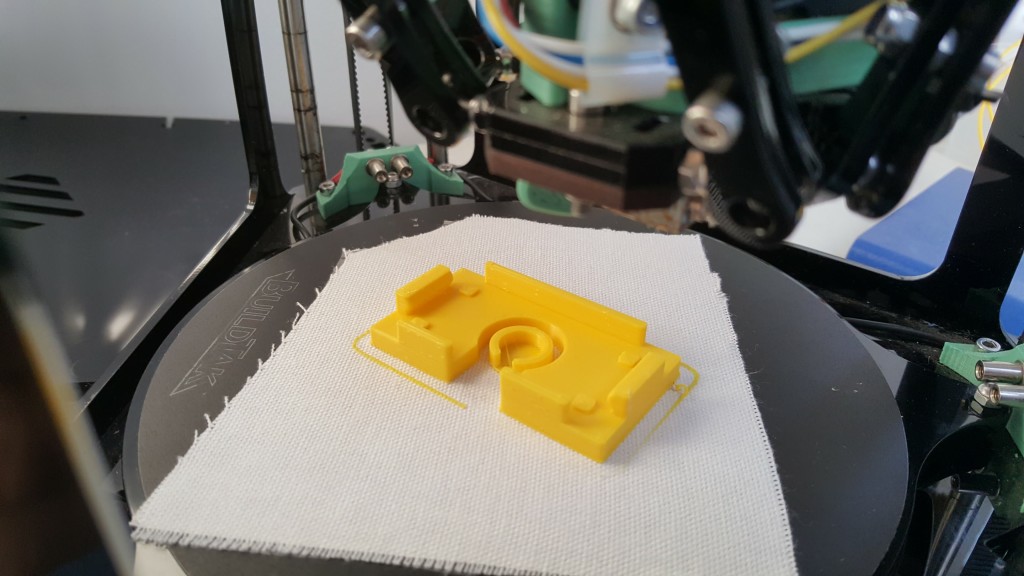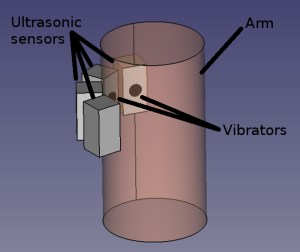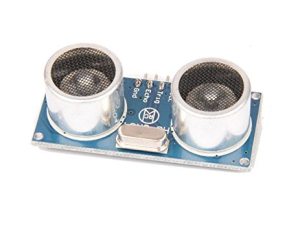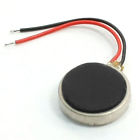As I mentioned in the last blog post, we were inspired by the Feelspace Project (which gives you a magnetic compass sense, like migrating birds) to have a go at making a wearable device that would allow you to feel your surroundings – essentially extending your sense of touch out to a range of three metres or so.
The idea is to have a set of rangefinders in armbands that point outwards around your body. Each armband also has vibrators in that vibrate against your skin at an increasing frequency as the range from each sensor gets smaller. The left armband covers your left-side surroundings, and the right your right-side.
We now have the first prototype. We obtained some of these ultrasonic rangefinders and these mobile phone vibrators.
Our researcher Matt and I programmed an Arduino Uno to loop through a bunch of the rangefinders in turn getting a distance in metres from each and to use the results to set the mark/space ratio of the signals sent to the corresponding vibrators. The Uno outputs can drive the vibrators directly with no extra electronics needed, as they are very low-current.
The whole thing is powered by one of those recharge-your-phone USB battery packs. These are compact, and have enough amp-hours of charge to run the device for over sixteen hours a day (that is to say, all the time you are awake, with overnight recharging). For the Arduino, they also conveniently provide power as a USB socket.
We made the armbands by directly printing on the fabric that will form them as described in the last post. This allowed us to construct a case for each ultrasonic sensor and a holder for the corresponding vibrator in a hole in its base. The only mechanical location of the vibrator was done by the fabric, which allowed it to be pressed against the skin by simply putting a little foam rubber in the case to push it downwards bending the fabric slightly. It could then vibrate freely.

It works! It needs some extra adjustments and a bit of tidying up and refining, but you can feel walls, and even bushes, as you get close to them, and you know whereabouts relative to you they are.
Here is Sally using the device. Note that all the time she is moving in the video she has her eyes closed.
Feelspace have found that, when you wear a device like this, your brain integrates the signals into your sensory map and moves the processing down into your subconscious. Thus, with their compass sensor, after a few weeks the wearer finds that they have a near perfect sense of direction and – equally interestingly – when asked how they do it they can’t put the experience into words, just as we all cannot explain by introspection how we see what we see.
All the files for this project are on our Github repository with an OS licence so feel free to download them and have a go yourself.
Connect with us
Keep up to date on the latest RepRap Ltd news:





This is really nice. A simple and smart solution for disadvantaged people. Sweet as honey! 🙂
I guess the next work is to try and add multiple vibrators which might give different vibrations and times so that user can get more information about distance and direction.
Yes – at the moment it has four sensors on one arm. This allows you to feel forwards, backwards and sideways on that side of your body. Adding another identical device to your other arm would give you a full 360 degree range. Because you can move your arm about, you can also feel upwards and downwards around yourself as well as horizontally.
And yes – as our post implies one of our intentions was to make it for visually impaired people. But not just them – it is also useful for able-bodied people to add low-bandwidth senses that evolution has failed to equip them with.
Pingback:Arduino Blog – Adding an “extra sense” with rangefinders
I’m trying to build one of these for my grandfather who is not seeing too well. However, I can’t seem to find any details on how to do the wiring.
Could you help me, please?
First – as I’m sure you realise – this is still in its very early stages of development. But that’s OK. New aids for the disabled and enhancements for the able-bodied that are experimental are there to – well – be experimented with.
To answer your question – the Arduino pins are these:
Sensor number..Trigger echo pin..Read echo pin..Vibrator pin
0..............2.................14.............5
1..............3.................15.............8
2..............4.................16.............9
3..............7.................7..............10
Wire the vibrators between their pins and ground. Connect the ultrasound devices to the pins above according to their data sheet here: http://www.micropik.com/PDF/HCSR04.pdf
See here for the digital equivalent of the Arduino’s analogue pins: http://www.sharetechnote.com/image/Arduino_Uno_FullBoard_03.png
Let us know how you get on, and – of course – please post any suggestions for improvements and corrections.